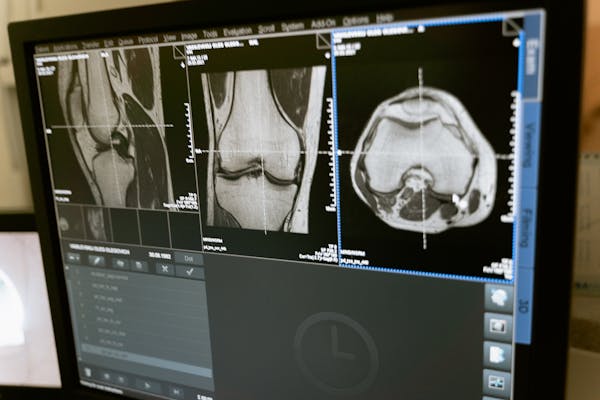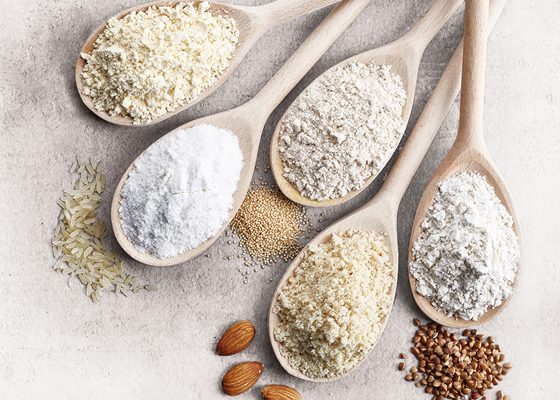
In the journey towards overall well-being, one fundamental aspect often overlooked is the importance of bone health. The phrase “Building Stronger Bones” encapsulates a proactive approach to fostering robust skeletal structures, essential for a resilient and active lifestyle. Our bones provide the framework for our bodies, supporting movement, protecting vital organs, and serving as a repository for essential minerals. In this exploration, we delve into the key strategies and practices that empower individuals to start on the path of building stronger bones, ensuring a foundation that stands the test of time. From nutrition and exercise to lifestyle choices, let’s unravel the secrets to fortifying the very core of our physical vitality – our bones.
How to Build Strong Bones
Building stronger bones is a proactive and lifelong endeavor that involves a combination of dietary choices, exercise, and lifestyle habits. Strong bones are crucial for overall health, mobility, and longevity. Here’s a comprehensive guide on how to build stronger bones:
-
Nutrient-Rich Diet:
Ensure your diet is rich in nutrients essential for bone health, including calcium, vitamin D, magnesium, and vitamin K. Include dairy products, leafy greens, nuts, seeds, and fatty fish in your meals. These nutrients play a vital role in bone formation, density, and strength.
-
Weight-Bearing Exercises:
Engage in weight-bearing exercises and resistance training to stimulate bone growth and increase bone density. Activities such as walking, jogging, dancing, and weightlifting put stress on the bones, promoting the deposition of minerals and enhancing bone strength.
-
Balanced Physical Activity:
Incorporate a mix of aerobic exercises, strength training, and flexibility exercises into your routine. This well-rounded approach ensures that all aspects of bone health are addressed, including endurance, muscle strength, and joint flexibility.
-
Adequate Vitamin D Exposure:
Vitamin D is essential for calcium absorption, a key component for strong bones. Spend time outdoors to allow your body to produce vitamin D through sunlight exposure. If sunlight is limited, consider vitamin D supplements, following guidance from healthcare professionals.
-
Maintain a Healthy Body Weight:
Maintain a healthy body weight to reduce the risk of excessive strain on bones and joints. Both underweight and obesity can negatively impact bone density. A balanced diet and regular exercise contribute to achieving and maintaining a healthy weight.
-
Limit Alcohol and Tobacco Consumption:
Excessive alcohol consumption and tobacco use can contribute to bone loss. Alcohol interferes with calcium absorption, while tobacco can reduce bone density. Limiting or avoiding these substances positively influences bone health.
-
Include Bone-Boosting Foods:
Incorporate foods that promote bone health, such as those rich in collagen (bone broth) and omega-3 fatty acids (fatty fish, flaxseeds). These nutrients contribute to bone structure and reduce inflammation, supporting overall bone strength.
-
Regular Health Check-ups:
Schedule regular check-ups with healthcare professionals, especially if you are at risk of osteoporosis or other bone-related issues. Bone density tests and assessments can help monitor your bone health and enable early intervention if needed.
-
Hydration:
Stay adequately hydrated, as water is essential for overall health, including bone health. Water aids in nutrient transportation, and dehydration can affect the balance of minerals crucial for bone strength.
-
Prioritize Bone Safety:
Be mindful of activities that pose a risk of falls or fractures. Take precautions, especially if you have pre-existing conditions or are in an age group where bone health is a concern. Use appropriate safety gear during physical activities.
Benefits of Building Stronger Bones
Building stronger bones offers a multitude of benefits that extend beyond just skeletal strength. Here are some key advantages associated with prioritizing and enhancing bone health:
-
Reduced Risk of Osteoporosis:
Osteoporosis is a condition characterized by weakened and porous bones, making them more susceptible to fractures. Building stronger bones through proper nutrition and weight-bearing exercises helps reduce the risk of developing osteoporosis, particularly as you age.
-
Enhanced Bone Density:
Strong bones are synonymous with increased bone density. Optimal bone density is essential for maintaining structural integrity, stability, and resistance to fractures. Regular weight-bearing exercises and a diet rich in essential nutrients contribute to higher bone density.
-
Improved Posture and Alignment:
Strong bones provide essential support for the muscles that maintain posture. A robust skeletal structure helps prevent issues like poor posture, slouching, and misalignment. This, in turn, reduces the risk of musculoskeletal problems and enhances overall physical appearance.
-
Better Joint Health:
Strong bones contribute to better joint health. Proper bone density and structure support joints, reducing the risk of conditions like osteoarthritis. Maintaining joint health is crucial for flexibility, mobility, and overall ease of movement.
-
Lower Risk of Fractures and Injuries:
Building stronger bones increases their resistance to fractures and injuries. This is particularly important in activities that involve impact or stress on the skeletal system. Strong bones can better withstand external forces, reducing the likelihood of fractures.
-
Enhanced Athletic Performance:
Athletes benefit significantly from strong bones as they provide a solid foundation for muscle attachment and support dynamic movements. Building stronger bones can contribute to improved athletic performance, agility, and overall fitness.
-
Support for Vital Organs:
The skeletal system plays a protective role for vital organs such as the heart, lungs, and digestive organs. Strong bones provide a sturdy enclosure, safeguarding these organs from external impact and potential injury.
-
Improved Metabolism:
Weight-bearing exercises, which contribute to building stronger bones, also stimulate metabolism. This can aid in weight management and reduce the risk of obesity-related conditions, which can negatively impact bone health.
-
Increased Longevity and Independence:
Strong bones are a foundation for a healthy and active lifestyle, contributing to increased longevity. Maintaining bone health is crucial for maintaining independence as you age, reducing the risk of falls and fractures that can impact overall well-being.
-
Overall Well-Being:
Bone health is interconnected with overall well-being. Strong bones support the body’s functions and contribute to a sense of physical resilience and vitality. This, in turn, can positively impact mental well-being and quality of life.
Exercise That Can Help Building Stronger Bones
Building stronger bones is a multifaceted process that involves a combination of weight-bearing, strength-training, and flexibility exercises.
- Weight-Bearing Exercises:
- Walking: Brisk walking is a simple and effective weight-bearing exercise that puts stress on bones, promoting bone density.
- Jogging/Running: Running and jogging are high-impact activities that help stimulate bone-forming cells, enhancing bone density.
- Strength Training:
- Weightlifting: Resistance training with weights or resistance bands helps to build and maintain bone mass. Focus on exercises like squats, deadlifts, and bench presses.
- Functional Movements: Incorporate functional movements that mimic everyday activities, such as lifting groceries or picking up objects from the ground.
- Jumping and Plyometric Exercises:
- Jump Squats: These involve jumping explosively from a squatting position, promoting bone density through impact.
- Box Jumps: Jumping onto and off a sturdy box challenges bones and muscles, contributing to bone strength.
- Yoga and Pilates:
- Yoga Poses: Certain yoga poses, such as Downward Dog, Warrior series, and Tree pose, engage muscles and stimulate bone health.
- Pilates: Pilates focuses on core strength and stability, which indirectly supports bone health.
- Balance and Stability Exercises:
- Single-Leg Stands: Stand on one leg for increasing durations to improve balance and strengthen lower-body bones.
- Tai Chi: This low-impact martial art emphasizes balance, coordination, and flexibility, contributing to bone health.
Conclusion
In the pursuit of overall well-being, “Building Stronger Bones” emerges as a proactive commitment essential for longevity and vitality. This concise guide advocates for a balanced diet rich in bone-essential nutrients, weight-bearing exercises, and healthy lifestyle choices, emphasizing the preventive role in reducing osteoporosis risks. The multifaceted benefits of enhanced bone density, improved posture, and joint health underscore the holistic impact of prioritizing bone strength. Acting as a safeguard against osteoporosis, this approach stimulates bone formation, optimizes calcium absorption, and maintains skeletal architecture. Through regular health check-ups and lifelong habits, the journey of building stronger bones becomes an investment in a resilient foundation for a healthier and more active future, encapsulating the essence of holistic well-being.



